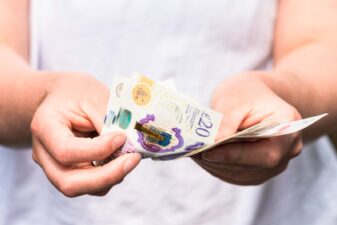The 2008 crash was about falling demand. It was caused by two related bubbles. Low interest rates fuelled massive borrowing, which led to higher asset prices. This in turn encouraged even greater borrowing. Neither of the bubbles were sustainable, and when one wobbled, the other crashed. A deep economic shock followed.
You can call the crash itself a ‘Minsky moment’, named after the economist whose theories explain the credit cycle and how occasional collapses are inevitable.
The 2008 crash, just like the 1929 crash, was followed by a balance sheet recession, which are always nasty, and indeed can be called depressions.
Passive income stocks: our picks
Do you like the idea of dividend income?
The prospect of investing in a company just once, then sitting back and watching as it potentially pays a dividend out over and over?
If you’re excited by the thought of regular passive income payments, as well as the potential for significant growth on your initial investment…
Then we think you’ll want to see this report inside Motley Fool Share Advisor — ‘5 Essential Stocks For Passive Income Seekers’.
What’s more, today we’re giving away one of these stock picks, absolutely free!
What’s different about 2020 crash?
The 2020 crash is different in an important way. It represents a hit on demand and supply.
I know that some people may find themselves overcome by a severe case of deja vu and cite 12-years of near zero interest rates and surging asset prices to argue that the current crisis is just like the last one. But this one is different.
Sure global debt levels have surged, but across most of the developed world, neither the ratios of stock markets to profits, nor house prices to wages, are nearly as high as in 2008. Banks have much more capital to act as buffers in the event of a downturn. Household debts relative to GDP are lower than in 2008, and because interest rates are likely to continue to remain ultra-low for the foreseeable future, they are also likely to remain much more affordable.
There are pockets in some emerging markets, and among some corporations, where debt levels are possibly unsustainable. In the West, however, the biggest debt increases have related to government spending. If anything, the interest that governments pay on debt is likely to fall. For example, as shares tumble, money floods into government bonds. As a result, the yield on 10-year US Treasuries has fallen below the rate of US inflation. Government debt is high, but across much of the developed world it is eminently affordable.
For these reasons the 2020 coronavirus economic shock is likely to be sharp, but short.
The aftermath
Some sectors might see permanent damage — I wonder, for example, whether the cruise industry will ever recover.
The economy will bounce back. Once the threat of the coronavirus recedes, whether that will is later this year or next, the economy will breathe a sigh of relief and there will be a mass scramble to normality.
I suspect China will be the first large economy to recover. Companies that rely on China but have seen a big fall in their share price might see an early recovery too — that’s companies like Burberry.
I suspect this crisis will hasten the move away from oil to renewables — companies that are big in renewables, like Drax, or funds like the Octopus Renewables Infrastructure Trust, will benefit.
I also suspect that this time around high dividend paying banks will be good recovery stocks, but not yet.
The biggest long-term risk was explained well by Neil Shearing, at Capital Economics. He speculates that a hunt for yield will create various bubbles and sow the seeds for the next crisis, but that is a story for another time.







